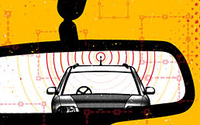 By Chuck Martin
By Chuck Martin
There’s still a great distance between the somewhat smart car of today and the driverless car of the future.
But the relationship between people and their cars is on a path of evolution as vehicle technology melds more into The Internet of Things.
Over the next decade, the auto industry will be faced with empowered consumers, changing mobility models and a transforming ecosystems, according to a new global study.
Even the meaning of the word driving is expanding beyond steering a vehicle, according to the IBM study, which comprised a survey of 16,000 consumers in the top 16 automotive countries.
The car of the future will know who’s in the car, make decision for them and even become a trusted companion.
However, many people driving late model cars realize that much of the in-vehicle technology today is still somewhat complicated and not easy for everyone to use. Much of it is hardly intuitive.
But the study did identify some characteristics of the car of the future.
In a separate survey of 175 global industry executives, IBM research identified six self-enabling innovations that 80% of the execs said would be a key differentiator by 2025.
Consumers were then asked which of the six aspects interested them. Here’s the result:
- 59% — Self-healing. Vehicles fix and optimize themselves without human intervention based on certain events or situations. These cars would heal small paint scratches within an hour and deeper scratches within a week.
- 55% — Self-socializing. Vehicles connect with other vehicles and the infrastructure around them to share information and solutions. This could be connecting with traffic lights and then suggesting the optimal speed to reach the light when it’s green.
- 54% — Self-learning. Using cognitive capabilities to learn behaviors, such as learning who is in the car and surrounding environment.
- 54% — Self-driving. Cars become highly automated, with some areas of limited autonomous function in controlled environments.
- 51% — Self-configuring. Individual mobility personas contain necessary, driver-authorized digital information about individuals to provide the desired, personalized vehicle experience.
- 49% — Self-integrating. Like other smart devices, the vehicle will be an integrated component of The Internet of Things.
However, not all markets are the same.
For example, in growth markets, such as Russia, China, Thailand and India, 66% of consumers are drawn to self-driving cars. This compares to 41% in mature markets, such as the U.S., Canada, U.K. and Germany.
Despite all the future technology for cars coming, the majority (55%) of consumers today want information services such as weather and traffic delivered in their car.
There’s a long road ahead.










